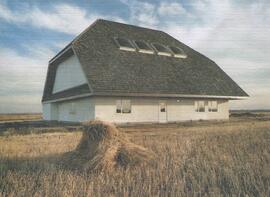The collection consists of field research materials collected by Mariya Lesiv as part of her research during doctorate studies at the Ukrainian Folklore Program, University of Alberta, and a copy of her dissertation entitled "Modern Paganism between east and west: construction of an alternative national identity in Ukraine and the Ukrainian diaspora." 15 mini-DVs contain field video, 10 CDs - photographs, documenting rituals and interviews with Pagans in both Ukraine and North America.
Dissertation abstract:
Modern Ukrainian Paganism is a new religious movement that draws upon beliefs and practices from over a thousand years ago. It represents a mode of resistance to both the political oppression of Ukraine and the dominant position of Christianity in that country. Paganism spread among the urban Ukrainian intelligentsia in the North American diaspora after World War II, and developed actively in Ukraine after the collapse of the Soviet Union. Today, while experiencing a great decline in the diaspora, it is rapidly growing in Ukraine, involving many different Pagan communities and thousands of believers.
Pagans draw on a variety of sources including both historical chronicles containing information about old Slavic mythology and contemporary rural folklore that is believed to maintain remnants of the old pagan worldview. Although many folkloric forms have been appropriated by the Christian church, contemporary Pagans consider these elements to have originated in pre-Christian times and reclaim them for their own needs.
This work is the first extended study of Ukrainian Paganism in its post-Soviet East European context and in the North American diaspora, simultaneously comparing it with Western Paganism. It is based on ethnographic fieldwork, including participant observation of rituals and interviews with Pagans in both Ukraine and North America, as well as on archival and published materials.
While focusing predominantly on the revival of pagan folklore within this movement, this thesis demonstrates how the imagined past has become important for constructing an alternative national identity in modern contexts of socio-political turmoil. The thesis suggests that this cultural revival often has little to do with historical reality, since there is limited primary information available. Like other revivals, it involves the construction of new cultural forms through creative interpretations of the ancestral past. Moreover, the obscurity of the past allows individualistic interpretations that result in many variations of similar forms. These forms are examined in their relationship to the concepts of nationalism, gender, charisma and power, religious syncretism, and aesthetics. This work is multidisciplinary in nature as it draws upon theoretical frameworks developed in fields of folkloristics, anthropology, sociology, cultural studies and art criticism. It contributes to the understanding of modern cultural processes that shape the national consciousness of people in various parts of the world.
